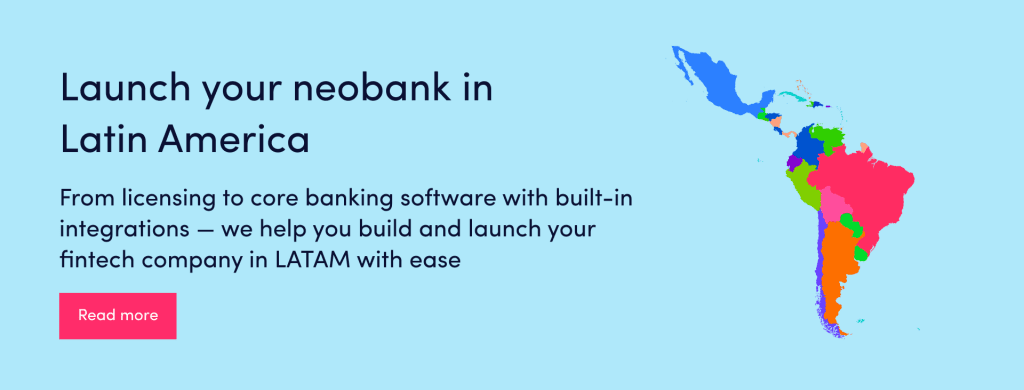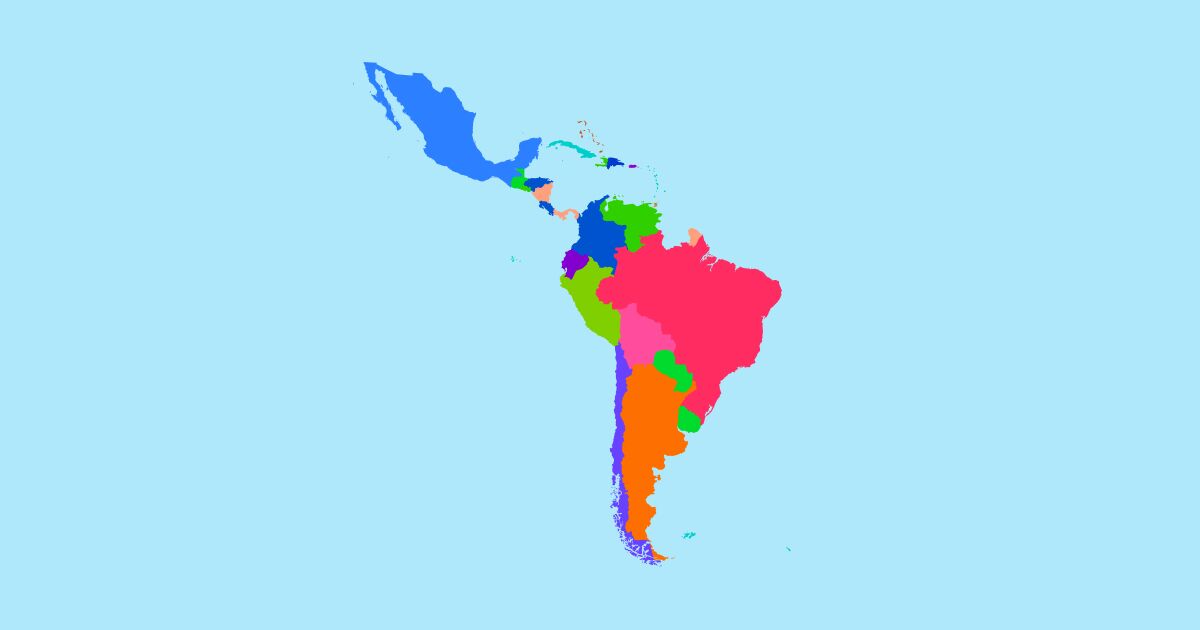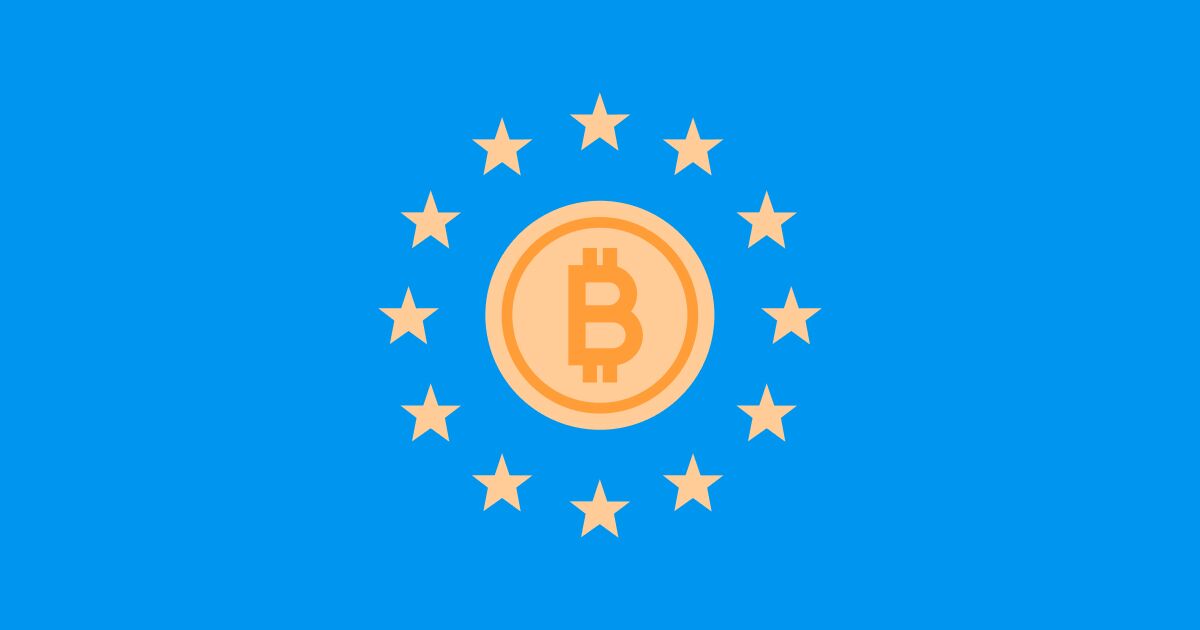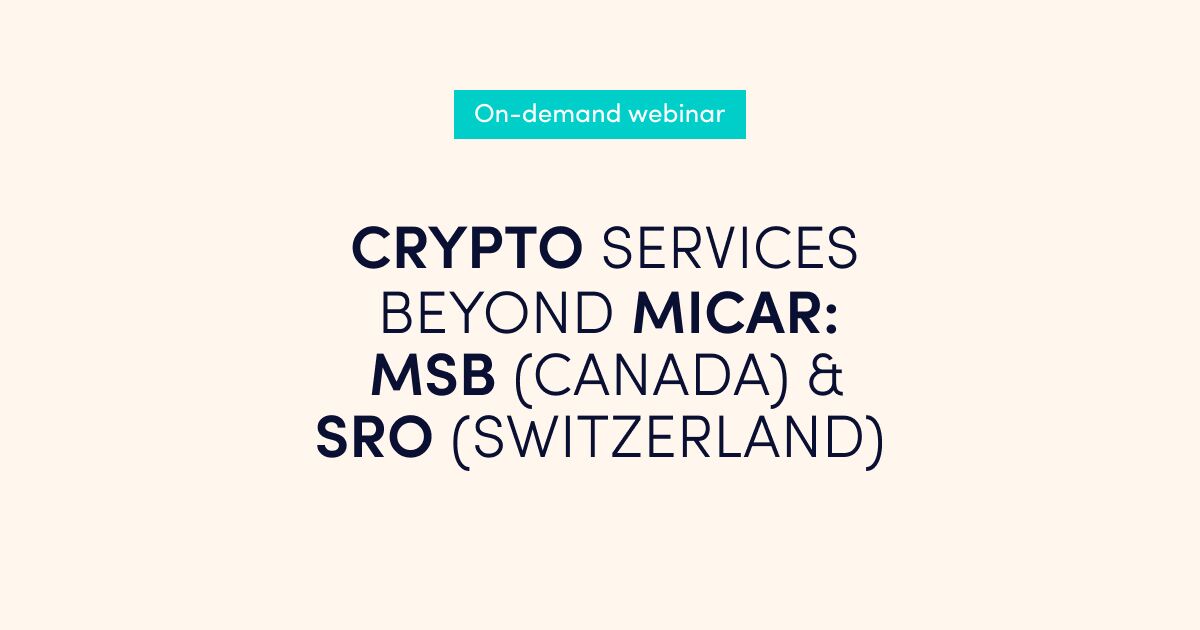Latin America’s FinTech sector is booming. In 2024, the region counted about 3,000 startups in 26 countries. That’s up from only 703 in 2017, a 340% increase in seven years.
At the same time, the FinTech market’s value in Latin America reached an impressive USD 71.36 billion in 2024, with experts at Market Data Forecast saying it will reach USD 125.88 billion by 2033.
Brazil, Mexico and Colombia account for 57% of total companies. Brazil leads the region in the number of FinTechs, representing just under a quarter, followed by Mexico with 20%, Colombia with 13% and Argentina and Chile with 10% each.
Factors Fueling Latin America’s FinTech Boom
1. Large Unbanked Segments
70% of the LatAm population is either “unbanked” or “under-banked”. Access to credit and savings remains scarce, with only 28% of adults having access to financial institutions. In Mexico alone, nearly 49% of adults remain unbanked. According to MarketWatch, that’s a pool of around 66 million potential customers.
Roughly 57% of FinTechs in Latin America serve the unbanked or under-banked. For individuals, this often means access to loans; for small businesses, it usually takes the form of payment solutions.
2. Rising Digital & Mobile Internet Adoption in Latin America
According to GSMA, by late 2024, about 413 million people, approximately 64% of the region’s population, used mobile internet. That’s 180 million more users than in 2015.
Brazil leads the top with around 182 million users in January 2024, which accounts for 86.6% of its population. Chile also ranks high, with 90.2% of its population connected to the internet as of 2023.
This increase has also had a positive impact on Latin America’s economy, with mobile technologies and services contributing over USD 550 billion in 2024 alone, or about 8.2% of the region’s GDP.
3. Supportive Regulatory Landscapes
To support innovation, governments are introducing frameworks like open finance and instant payments. Several countries, including Brazil, Chile, Mexico, and Colombia, have also established regulatory sandboxes where FinTechs can safely trial new products.
Alongside investments in public infrastructure and broadband, these measures are helping to expand digital access throughout the region.
4. VC Interest
Despite the global slowdown, Latin America has remained resilient. In the first half of 2024, the region attracted $1.2 billion in investments, a 20% increase compared to 2023.
Over the full year, FinTechs in Latin America raised $4.2 billion in seed-to-growth rounds, a 27% jump from 2023. Some reports noted VC investment in the region surged by 86% in 2024, bucking global declines.
Brazil secured the largest share, attracting $1 billion, 42% of the regional total. More broadly, startup investment in the region grew 26% year-over-year in 2024, outpacing Europe’s 7%.
Market Infrastructure
Open Finance / Open Banking Frameworks
Since 2023, open finance in Latin America has expanded, but most countries still focus on open banking. Progress is uneven, and each country moves at its own pace.
Chile, Colombia, Mexico, Brazil, and Ecuador have laid the ground for FinTech expansion through various regulatory frameworks and policies. Their goal is to improve financial inclusion, reduce barriers to entry, and foster innovation.
Brazil leads with one of the world’s most advanced ecosystems. By April 2024, the Central Bank of Brazil had rolled out the first four stages of open finance, including open insurance and advanced APIs.
Chile passed its FinTech Law to govern open finance, with mandatory implementation scheduled for April 2026.
Mexico was the first in the region to regulate open banking, with its 2018 FinTech Law. However, regulations currently target only open-data APIs as broader rules are still pending.
Colombia has also moved quickly. Building on the initial 2021 regulations, it introduced a comprehensive draft decree on open finance in June 2025.
Other countries, such as Guatemala, Peru, Argentina, Uruguay, Ecuador, and the Dominican Republic, are still in early discussions or development stages.
Real-Time Account-to-Account (A2A) Payments
Several Latin American countries are strengthening real-time account-to-account payment systems.
- Brazil expanded Pix, its instant payment system, to Pix Automático for recurring debits.
- Mexico upgraded SPEI with stronger security and QR payment capabilities.
- Colombia is rolling out Bre-B, a 24/7 interoperable system.
- Peru’s Central Reserve Bank partnered with India’s NPCI International to develop the country’s first UPI-style real-time payments system, making it the first in South America to adopt this model.
- Argentina launched Transferencias 3.0, a nationwide interoperable QR payment scheme that enables real-time, interoperable transactions between any bank or digital wallet.
These systems show how the region is moving toward faster, easier, and more inclusive payments. According to the World Economic Forum, real-time systems such as Pix, SPEI, and Transferencias 3.0 now account for about 60% of consumer expenditures in the region.
Thanks to its active regulatory environment and rising capital, Latin America is becoming a global center for FinTech and financial inclusion.
Leading FinTechs & Digital Banks in Latin America
The region’s neobanking and FinTech ecosystem includes several standout players.
1. Nubank (Nu Holdings)
Latin America’s largest FinTech bank, Nubank, serves Brazil, Mexico, and Colombia. Its digital-first banking and emphasis on serving the unbanked have made it popular with major investors, including Warren Buffett and Cathie Wood.
2. Banco Inter (Inter&Co)
Originally a traditional Brazilian bank, Inter became a digital super-app offering accounts, investments, insurance, loans, and a marketplace. As of 2024, it serves over 36 million clients and continues expanding internationally.
3. Ualá
An Argentine digital banking app available in Argentina, Mexico, and Colombia, Ualá provides free accounts, payments, loans, investments, and loyalty features, all managed through a mobile app.
4. Neon
A Brazilian neobank targeting younger, tech-savvy users, Neon offers low-fee accounts, cards, and loans.
5. C6 Bank
Based in Brazil, C6 Bank offers sophisticated services like multi-currency accounts, carbon credit trading, and loyalty rewards and has attracted investment from JPMorgan Chase.
6. Mercado Pago
Part of Argentina’s Mercado Libre ecosystem, Mercado Pago is the most widespread digital wallet in the region, offering QR payments, credit lines, and merchant tools.
7. Klar
A Mexican FinTech with no-fee debit and credit cards, Klar offers cashback rewards, and alternative-data-based credit scoring, targeting underserved populations.
8. RappiPay / RappiBank
Integrated into the Colombian super-app Rappi, these services offer accounts, cards, credit, and crypto services in Colombia, Mexico, and Brazil, bringing payments and banking into a one-app ecosystem.
9. Albo
A pioneering Mexican neobank, Albo offers free digital accounts with international Mastercard cards. The mobile-only service lets users send, spend, and track money easily, simplifying financial management.
10. Clara
A FinTech company headquartered in Brazil (founded in Mexico), Clara offers corporate credit cards, digital accounts, and expense management solutions.
11. Yape
Developed by Peru’s BCP, Yape is a leading digital wallet and super-app in Peru and Bolivia. It provides commission-free P2P transfers, bill payments, microcredits, international remittances, and e-commerce, all powered by QR codes, and has over 17 million users.
12. AstroPay
Founded in Uruguay, AstroPay provides individuals and businesses with a global digital wallet that features multi-currency accounts, prepaid cards, and various payment options. Following its separation from dLocal, another FinTech company based in Uruguay, it has redirected its efforts towards cross-border and loyalty solutions.
Challenges of Launching a FinTech Company or Neobank in Latin America
Latin America offers many opportunities for FinTech growth, but there are still plenty of obstacles. Companies entering this market must navigate regulations, funding hurdles, and consumer trust issues that can slow down progress. Key challenges to consider include:
Fragmented regulations. Each country has its own licensing regime and compliance requirements, making cross-border expansion complex, time-consuming, and costly.
Regulatory lag. In many jurisdictions, FinTech laws are outdated and supervisory authorities are often under-resourced, creating uncertainty and delays for new business models.
Scalability and funding. Small home markets make it hard for many neobanks to grow and attract enough investment for long-term success. In Argentina, for instance, the macroeconomic instability pushed Ualá to expand into markets like Mexico and Colombia. Meanwhile, in smaller countries like Uruguay and Guatemala, the limited customer base restricts growth potential, forcing FinTechs to partner with incumbents for infrastructure and distribution.
Limited financial literacy and trust barriers. Many consumers have limited knowledge of digital finance and remain cautious, preferring traditional institutions. This approach complicates customer onboarding and broader acceptance for neobanks, requiring significant investments in education, transparency, and trust-building.
Country-by-Country Licensing Snapshot
Brazil – Payment Institutions (Central Bank of Brazil)
The Central Bank of Brazil (BCB) authorizes several categories of payment institutions, including:
- E-money issuers: providers of digital wallets and electronic money accounts.
- Post-paid instrument issuers: issuers of credit cards and other post-paid products.
- Acquirers: merchant payment processors that handle card transactions.
- Payment initiation service providers (PISP/ITP): institutions that initiate payments under open finance frameworks.
- SEP license holders: platforms authorized for peer-to-peer lending.
Mexico – IFPE & TDD
Under Mexico’s FinTech Law, companies may apply for two key licenses:
- IFPE (Institución de Fondos de Pago Electrónico): allows the issuance of electronic money and operation of digital wallets.
- TDD (Transmisor de Dinero): authorizes companies to provide money transmission and remittance services.
Colombia – SEDPE
The Sociedad Especializada en Depósitos y Pagos Electrónicos (SEDPE) license helps promote financial inclusion by authorizing:
- Low-value deposit accounts.
- Electronic payment services.
- Digital wallets under regulated conditions.
Chile – OSP
Chile’s Operador de Servicios de Pago (OSP) license allows entities to:
- Provide payment processing services.
- Operate as merchant acquirers.
- Support interoperability in line with Chile’s evolving open finance framework.
Argentina – PSP
In Argentina, Payment Service Providers (PSPs) must register with the Central Bank of Argentina (BCRA). Once registered, they can:
- Run digital wallets and QR payment systems.
- Offer merchant acquiring services.
- Connect to the national Transferencias 3.0 system for real-time transactions.
Peru – EEDE/EDDE
In Peru, the Empresas Emisoras de Dinero Electrónico (EEDE/EDDE) are regulated by the Superintendency of Banking, Insurance and AFPs (SBS). These entities may:
- Issue electronic money.
- Operate digital wallets.
- Facilitate payments as an alternative to cash, supporting national financial inclusion strategies.
Dominican Republic – PSPs under SIPARD/SGPI
The Central Bank and the Superintendency of Banks oversee payment services through frameworks such as SIPARD and SGPI. These regulations cover:
- Payment Service Providers (PSPs).
- Merchant acquirers.
- Clearing and settlement system operators.

Partnerships
For many neobanks in Latin America, the first step is partnering with banks or licensed financial institutions. These partnerships provide regulatory cover, safeguard deposits, and ensure compliance.
Connecting with payment service providers is equally important. They allow FinTechs to process payments, issue cards, and integrate with national systems such as Pix (Brazil) or SPEI (Mexico).
Latin America is becoming a major international center for FinTech. The market offers substantial untapped potential with mobile-first consumers and a new regulatory environment. But growth can’t happen overnight. Fragmented rules, funding gaps, and the need to build trust are challenges companies need to consider.
For the players that get it right, the prize is clear: reshaping how millions of people and businesses across the region access and use financial services.
How Advapay Can Help
Simplified licensing. We guide FinTechs and crypto businesses through country-specific licensing requirements, helping them secure PSP, EMI/PI, CASP, MSB, Money Transmitter, and SRO registrations in multiple jurisdictions. We’ve supported over 100 clients across Europe, Canada, and Latin America.
Modular core banking. Our scalable core banking platform, Macrobank, comes with built-in functionality including accounts, crypto wallets, payments, currency exchange, payment cards, AML/KYC, onboarding, and a full back-office suite.
Ready-made white-label solutions for end-users. Branded web and mobile banking apps with ready-to-use white-label solutions allow you to launch quickly and shorten time-to-market.
Local support. Regional teams and specialized law firms handle the complex license process with local regulators. This makes the experience smoother and more cost-effective.
Regional expansion support. Through integrations with banks, PSPs, issuers, and compliance providers, we help clients expand smoothly into new markets.
Working with partners. Our partner network includes BaaS providers, card issuers, and technology firms. For example, a software house in Chile provides technological support to Macrobank clients across Latin America.









